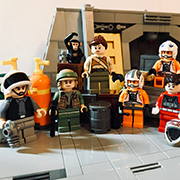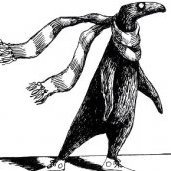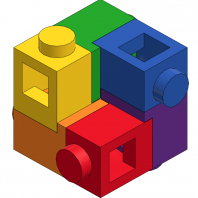Search the Community
Showing results for tags 'plane'.
Found 107 results
-
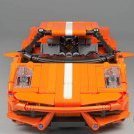
[MOC] CFM RISE engine
Leviathan posted a topic in LEGO Technic, Mindstorms, Model Team and Scale Modeling
Hello everyone, I'm pleased to present my latest personal creation: the CFM Group's RISE engine! This is a turboprop engine program known as Open Fan, i.e. without a nacelle enclosing the main fan. This kind of prototype, still at the demonstrator stage, should equip future aircraft by 2025-2030, if promises of reduced fuel consumption are kept! (https://www.cfmaeroengines.com/wp-content/uploads/2021/07/CFM_RISE_Whitepaper_Media.pdf) Like my version of the LEAP 1C already built in 2021 (https://www.flickr.com/photos/147164115@N07/albums/72157718957968196/with/51653430599/), I wanted to propose a standing model version once again with functional and motorized elements. I started the design at the end of 2023 and spread it out over 7 months. The final model is made up of around 1,300 parts, measuring around 20cm in diameter and 30cm in length. The big technical challenge lay in the mechanism for varying the incidence of the main rotating and fixed blades in a single movement, using a lever concealed in the base of the support! Let's see the photos: Technically speaking, to fully understand the concept, we need to distinguish between the "rotating" front fan blades and the "fixed" rear blades. A central mobile made up of 2 cradles is guided in translation by a linkage system. In transit, this mobile tilts all the eccentrically-mounted blades. The trick thing about this mechanism is that, from a single translation movement of the mobile, the front blades turn anti-clockwise, while the rear ones turn clockwise. You'll see, it's easier to understand on video! Of course, the entire mechanism operates when the motor is rotating. In addition to the technical challenge of packing this mechanism into a small footprint, I didn't neglect the aesthetic aspect of the motor to make it recognizable. Some will notice the painted parts on the blades and the nose. For the cylindrical part, which is always tricky to render in Lego, the motor is made up of 1 10-sided barrel using this assembly technique: https: //brick.camp/en/tech/clip-handle-swivel-decagon. In the compressor section, the rotating skirt is also inverted to fit under the conical cowling. Thank you for your reading, I hope you enjoyed it ! More photos available in HD at this link: https: //www.flickr.com/photos/147164115@N07/albums/72177720315475122 Paid instructions are available on Rebrickable: https: //rebrickable.com/mocs/MOC-180038/Levihathan/cfm-rise-engine/#details If you have any comments or questions, please do not hesitate :) @+ -
Hi all, (I don't really know where to put this - "Special Themes" or "Scale Modeling" - so if it's wrong here, please let me know... ) LEGO’s new Concorde is a fine set overall, but it has, in my opinion, some flaws which compromise its looks.So I had to decide whether to modify it or to build something different… and, as I prefer the more "brutal" appearance of the Concorde’s Soviet counterpart anyway, I chose the latter. The prototype The Tu-144 was the first commercial supersonic aircraft, its maiden flight taking place two months before the Concorde took off. Nevertheless, the Tu-144 is often regarded as much inferior to the Concorde, but that’s not the full story. Commercial passenger flights were only offered for a few months, that's true, but it was due to changing political circumstances rather than for technical reasons that the Tu-144 was finally withdrawn from passenger service. Indeed there were some technical issues (as perhaps with every completely new aircraft), but they most probably would have been solved had not the Soviet authorities lost interest in supersonic commercial aviation and thus ordered not only commercial flights, but the whole development programme to be terminated in 1983. And yet, while the first production variant Tu-144S was hampered by its inefficient Kuznetsov engines, the improved Tu-144D version (with Kolesov engines) had performance figures almost on par with the Concorde. Consequently, it was a Tu-144D (CCCP-77114, disguised as "aircraft 101" for unclear reasons) that set 13 official world records for speed and altitude with given payloads in July 1983, just after the cancellation of the Tu-144 programme had been announced. (For those of you who have a deeper interest in this matter: Yefim Gordon, Dimitriy Komissarov, Vladimir Rigmant - Tupolev Tu-144, The Soviet Supersonic Airliner. A very good reading about the Tu-114’s design, development and the political affairs behind it) The model To celebrate the 40th anniversary of its above-mentioned flights, my model bears the registration and "101" titles of the world record plane. I was originally motivated to design it by ungern 666’s Tu-144 sketch on Rebrickable, but, apart from some inspirations I took regarding the tail section, it has evolved into a completely different scale model. The plane consists of approx. 1900 parts an weighs ca. 1.3 kg. The "droop nose“, canards, rudders (yes, two) and elevons are moveable. While the landing gear is not retractable (I prefer a true-to-scale look over functions), it can be replaced with parts for the closed landing gear bay doors. Also, the tail cone can be replaced with a sub-model assembly showing the deployed brake parachutes. Unfortunately, at the moment there's only one photo of the completed model, which has a crudely photoshopped grey background. More pictures will follow as soon as I have found a sufficiently large, neutral, real background... Thanks for stopping by! Kind regards, Sven
- 21 replies
-
- scale model
- airplane
-
(and 8 more)
Tagged with:
-
Continuing the line of strange looking airplanes... This alternate from the set 60064 Arctic Supply Plane has been inspired by the asymmetrical reconnaissance aircraft from the german manufacturer Blohm und Voss. Now this is what "eurotrash" mentioned in my earlier post. Blohm&Voss BV 141 (60064 alternate) by Plastic.Ati, on Flickr This time it was very hard to regenerate the shape, as the cockpit panels were way too big, and there were not enough rounded or slope bricks. Starting from this point I tried to find the right measures for the wings (which were bent up at the ends, making some headache for me). I used THIS drawing for verifying the proportions, but I had to change several points because of the part availability. Blohm&Voss BV 141 (60064 alternate) by Plastic.Ati, on Flickr I ended up with a minifig-compatible, very swooshable model, which was not a copy of the original, but easily recognisable due to its distinct shape. Blohm&Voss BV 141 (60064 alternate) by Plastic.Ati, on Flickr Blohm&Voss BV 141 (60064 alternate) by Plastic.Ati, on Flickr After finishing the body it took me a while to find a solution for the foldable wheels on the wings, and I can say that it can hold the whole weight of the plane, but you should not push it too hard as it is the week point. During flight they can be folded up to the wings. Blohm&Voss BV 141 (60064 alternate) by Plastic.Ati, on Flickr Blohm&Voss BV 141 (60064 alternate) by Plastic.Ati, on Flickr Now I am working on the instructions so once it is ready, I will put the link here. Until that Finally the instructions are ready, and can be found on my Rebrickable page along with some other pics. C&C are welcome. Below you can check my other alternates for this set:
-
vintage airliner - Douglas DC-3 in Trans World Airlines (TWA) colors - 7628-inspired MOC - finished 7/14/23
Murdoch17 posted a topic in LEGO Town
Back in the day, whilst flying you could get a real turkey carved right in front of you, stretch your legs without bothering your neighbor in front of you, and take whatever you wanted on board with you... peanut butter, toothpaste, shampoo, you name it! Need the smoking section? The whole freaking plane was the smoking section! Of course, tower radar wasn't really a thing (cockpit radar was a long way off too), flight instruments were crude, and inflight entertainment was either out your window, napping, or reading whatever book you brought with you. Crashes were also common with survivability rates poor, and there was no GPS to guide your pilot on his way.... but they did have paper maps, gut instinct, a lot of know-how and nerves of steel. (a quick silent prayer couldn't hurt either) So, buckle those seatbelts (if your plane has any!) and steady those pre-flight jitters - we're taking off! This 1936-designed Douglas Aircraft Company DC-3 was very heavily modified from limited edition Indiana Jones set 7628 (Peril in Peru, from the Kingdom of the Crystal Skull film) and my own imagination. I redesigned the passenger cabin of the DC-3 to not have any pesky stickers as in the 2008 set. Sadly, the airplane's opening door has been removed as a consequence of redesigning the airframe. The colors are based off Trans-World Airlines (otherwise known as TWA) back in the immediately post-WWII period. It's not a perfect match for the paint scheme, but it doesn't use stickers, so I'm happy. The rear of the plane. Originally I wanted to build this airplane in green for Ozark Air Lines, but limited green wedge part availability killed that idea. (Ozark was headquartered at my local major airfield - St. Louis' Lambert Airport, from the early '50's until when they merged with TWA in 1986) The two front landing gear fold up. The roof of both cabin and cockpit come off to seat six passengers and one pilot figure. Thoughts? EDIT 7/14/23: Main post updated, model finished!- 6 replies
-
- douglas aircraft company
- set mod
- (and 12 more)
-
Hi all, this is a first aircraft, a Canadair CL-215 waterbomber in minifig scale (around 1:45). Its wingspan is 80 studs, the fuselage is 8 studs wide. The main points were getting the wings straight and getting a smooth fuselage, especially at the rear. Apart from that it was quite a fun build, although it took nearly two months. Being a complete newbie in building airplanes I was very glad to see that I had some predecessors. It helped me a lot to look at their versions of the Canadair. That's why there are quite a few credits: John Lamarck, Bombardier CL-415: measurements, proportions, wing profile vincez01, Canadair CL-215: fuselage, landing gear Zorko Huljic, Canadair CL-415: tail Last not least a big thank to my dear friend Steffen, a LEGO plane specialist, who gave me a lot of advice. Take a look at his fantastic aircraft: www.flickr.com/photos/29666619@N04 Some more pics: Side view: The plane fits two whole minifig pilots, as you can see here: Furthermore the aircraft has some functions: 2 engines (run by a PF M motor each) flaps (run by a PF M motor) movable rudder, coupled with the steerable nose wheel Video (sorry for the bad quality, it's just to get an impression): The plane was built to be moved by an LCS (see http://www.eurobrick...showtopic=91937). It was quite suspenseful to see if a plane with a weight of over 1 kilogramme could be pulled by it. In fact it's no problem, as you can see here: This is quite nice because like this an airport with taxiing planes is possible which widens the possibilities when planning a town layout. That's about it so far, some more pics on Flickr, if you're interested in this. C&C welcome as usual, thanks for looking.
-
Hello to the community. Below you see a render of a digital MOC I've realized beginning of the year. The MOC shows the former Luxembourg Airport Findel as it locked in the 50s, late 60s. Reference Images: The final MOC: Lego MOC Luxembourg Airport Findel by legolux1973, on Flickr Credits go to De Marco Bricks and Wheels, building instructions for the tractor and the tank truck I found on his Youtube Chanel. Maybe you like the MOC. Regards, legolux1973
-
Long time no see! Soaring is my latest kinetic sculpture. Wait. I have seen this before you might think. And you would of course be right. This model is heavily inspired by JK Brickworks' Pursuit of Flight. This was built for a cousin of mine who absolutely loves planes. If you have a kinetic sculpture from the absolute GOAT at your disposal that fits the bill, it would be foolish not to use it. Little video: The internal mechanism is pretty much identical. I am especially proud of the design of the planes. Unlike Jason's, these feature turning propellers. It's ridiclously simple, really. The propeller is connected to an axle that runs through the entire plane and is activated by a small gear on the rear. This forced me to build the entire plane with a core of 1x1 Technic bricks on their side. These bricks limit the design quite a bit, but also give it a fun Lego look. The base is brand-new too and features an Earth Blue ocean with some fun clouds (simple but really effective and fluffy!) - a combination of Dalek/Travis bricks, headlight/Erling bricks and plates and bricks. The cliffs on the background are loosely inspired by the White Cliffs of Dover and feature a lighthouse as a way to break the environment and tie the red/white colour scheme together. Same with the boat. The base is also new and far more ornate than Jason's original. Anyway, I think I gave it my signature look while keeping the genius of Jason's mechanism. I think it's cool but the judges are you! Hope you like it Gallery:
-
- kinetic
- kinetic sculpture
-
(and 1 more)
Tagged with:
-
An update to my 5th gen fighter: IMG_5536 by Nom Carver, en Flickr IMG_5538 by Nom Carver, en Flickr IMG_5537 by Nom Carver, en Flickr IMG_5539 by Nom Carver, en Flickr IMG_5542 by Nom Carver, en Flickr
-
Just another plane: IMG_5520 by Nom Carver, en Flickr IMG_5523 by Nom Carver, en Flickr IMG_5522 by Nom Carver, en Flickr IMG_5525 by Nom Carver, en Flickr
-
Hi everyone, This is my P-51 Mustang Racing MOC. It is made out of 401 official LEGO pieces. Blue Bull is 28.7 centimeters long (11.3 inches), its wingspan is 30.7 centimeters (12.1 inches), it weighs 263 grams (9.3 ounces) and its top speed is just over 400 km/h (over 250 mph)! A single pilot can sit in the comfortable cockpit and take control of the plane any time. Although Blue Bull has an aerodynamic design, its mainframe’s strength is not compromised! The model is designed with agility, durability and playability in mind, so in case of an accident, the plane is sturdy enough to withstand any drop from the height of up to 30 centimeters (12 inches), without any part breaking off. The model can be easily and carelessly swooshed by holding any part – main body, nose, wings, tail or even the propeller. Plane’s nose, wings and tail are connected at a slight angle. Sideways and top-down building techniques are implemented to achieve the appropriate design of the nose and tail. Nose has a smooth narrowing shape towards the propeller, while tail also narrows towards the endpoint. Main wings also have a slanted design – rear line of the main wings is angled in two points, contributing to the overall appealing shape and leaving enough room for the front landing gear. Front landing gear can be deployed or retracted, but rear landing gear is fixed. If you like the plane and would like to see more photos, visit my Flickr album. And if you especially like the model, consider supporting it on Ideas, under a title "Blue Bull"!
- 7 replies
-
- plane
- stunt plane
- (and 14 more)
-
The aircraft Completing its maiden flight on February 9th, 1969 the Boeing 747 went into production in 1970 and has been so for more than 50 years. Over the course of time many different variants of the airliner were produced. Aside from its major use in passenger transport it was used to carry the Space Shuttle, used as an airborne telescope and most recently used to launch rockets into orbit. Its iconic shape with the distinctive hump that accommodates the cockpit and the raised passenger deck has become a classic symbol for all jumbo jets and airborne passenger transport alike. With the aircraft retiring from service soon I thought it would be a great chance to submit this project as a tribute to this iconic airliner. The model While not being based on a specific variant of the 747 this model is meant to be a general tribute to this awesome marvel of engineering. The creation is built out of 603 parts (including stand) and the aircraft measures approximately 37 cm L x 33 cm W x 10.5 cm H (14.6" L x 13" W x 4.1" H). It includes many details such as printed decals representing the passenger windows and the doors, the four turbofan engines, removable landing gear and a sleek stand for dynamic display. In combination with the size, the stand and the stylish red and orange livery would make it a great swooshable desk display-piece for any fan of LEGO and aviation. This creation was built using Mecabricks and rendered in Blender but all building techniques have been tested with real bricks as well. Feel free to check out this 3D-view of the creation on Mecabricks and the high resolution images on flickr. If you like what you see then please consider heading over to LEGO Ideas and supporting. With your help this could become an official LEGO set!
-
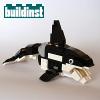
[C-model] 42106 - Pullback Vehicles
Tomik posted a topic in LEGO Technic, Mindstorms, Model Team and Scale Modeling
Few months have gone since I built my last alternative model from set 42106 and I got desire to build another one. The first model was Pullback Racer that I built for TC18 contest - more about it is here. Then I built Pullback Plane - more about it is here. And finally now I've built Pullback Helicopter. I planned to build it even before plane but I rejected it because I didn't see the way how to connect both rotor blades with pullback motor and landing gear. Set 42106 contains only 5 bevel gears and I usually use 6 for helicopter (three pairs). Later I find solution for problem with missing gear - I saved one bevel gear by connecting axle for tail rotor blade to another pair of bevel gears that transmit motion from horizontal axle to vertical. The only con of this solution is low possition of axle for tail rotor - see picture of mechanism. The last issue, I had to solve, was possition of center of gravity - it was too close to tail so helicopter made wheelies. I prevent them by adding structure under tail rotor blade. Do you think it was all for now? No, it wasn't. I've got one more idea, much crazier idea - I wanna build Pullback Steam Engine! I focused more to functionality than its look so proportions are not correct but it really works. Pullback motor is connected to rear axle and it drives also middle axle thanks to piston-rods. Front axle with small wheels works just like stabilizer (I had to move driven axles too far to rear behind center of gravity and whole vehicle would fall on its front without small wheels). Finally I added optional flame on chimney (smoke would be better but I didn't find any in donor set). I plan to make video of steam engine in action but it will not be anytime soon. Any comments and criticism are welcomed.- 30 replies
-
- train
- helicopter
-
(and 4 more)
Tagged with:
-
Some customized and upgraded lego kits. 1 by Nom Carver, en Flickr 3 by Nom Carver, en Flickr 6 by Nom Carver, en Flickr 8 by Nom Carver, en Flickr 11 by Nom Carver, en Flickr 13 by Nom Carver, en Flickr 15 by Nom Carver, en Flickr 17 by Nom Carver, en Flickr 19 by Nom Carver, en Flickr 20 by Nom Carver, en Flickr
-
A simple fighter. f1 by Nom Carver, en Flickr f10 by Nom Carver, en Flickr f6 by Nom Carver, en Flickr f5 by Nom Carver, en Flickr
-
A while ago I created a small minifigure scale plane inspired by the classic Cessna 172. I built an ordinary version as well as a seaplane. You can check out a 3D-view on Mecabricks and I also created custom instructions which you can find on Rebrickable.
-
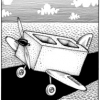
[WIP] The Flying Brick Restarted
whale2 posted a topic in LEGO Technic, Mindstorms, Model Team and Scale Modeling
This is a continuation of this project, which seemed to be quite thoroughly shelved, but recently got some new traction. Well, it's been a while... Since then I've changed few jobs, moved to another country and managed to bring the whole thing with me not losing any significant bits, except, maybe, LiPo charger. A lot of information is given in original post, but the short recap - this is an attempt to make a flying machine with 99% LEGO airframe. The powertrain and control system are, of course, totally non-LEGO, but, you know, the goal justifies the means... Though actual flying is not very likely, I did everything in my power to make it as close to the real flying thing as possible. At least, it should spectacularly burst into bricks :) Anyway, people call me crazy for this, but I don't mind. Let's have fun together :) Ah, yes, in order to keep the bricks together, almost everything is glued, except various fairings, access hatches and so on. Wing, tail fin, nose are also detachable. Since the restart, I reworked the flaps and literally a week ago I've found those Lego-compatible servo motors (like those used in this nice walking robot) Before that I planned to use micro motors with separate potentiometer, standard servo controller and H-bridge for higher Lego motor voltage. This even worked, but the torque of the micro motor is really tiny (about 1.5 N*cm) and that bothered me. New servos are sporting more comfortable 5 N*cm and also making the whole contraption a little simpler, also allowing for bigger ailerons. Anyway, the flaps are still operated by pair of micro motors with the same setup - potentiometer, servo controller, H-bridge. They drive the linear actuator via simple reduction gear and flap position should be read directly from the flap. Also, the Lego-compatible servo comes with the short axle and doesn't really fit. Would be much better if they make a axle hole instead... Next thing that got love and attention was the pneumatic system for the landing gear. While it is not complete, the pipes were installed and valves tested. Later it should be controlled by Arduino with few pressure sensors and more H-bridges, just because of complexity and small space available. Thing that I personally like and proud of is that all the machinery is hidden under the floor :) Few more shots of the wings - Next big thing will be finalizing the motor/propeller combo. I've made a thrust measuring rig fir this :) To actually start selecting the motors and propellers I need the battery charger instead of the one that was lost, so, now I'm waiting for it to arrive as well as for some electronic components for Arduino and another Lego-compatible servo, this time with 20 N*cm torque which will control the elevator. Having such big servo also allows making a bigger elevator which seems rather important. I've made a great progress during the Christmas holidays, I had a two week vacation and with the city in the lockdown it was really enjoyable way to spend the time. Now the holidays are over and despite the missing pieces, parts and components are about to arrive, I expect the building pace to slow down. Expect few videos of working components. Thanks for your attention and keep calling me crazy :) -

[VIDEO REVIEW] 42117 - Race Plane
Sariel posted a topic in LEGO Technic, Mindstorms, Model Team and Scale Modeling
Two LEGO Technic sets are down to $9.99 price range this year. Here's the bigger and flashier one of them: -
I recently finished building a LEGO City/Minifig scale plane that offers more details than your usual airliner. I have submitted my creation on LEGO Ideas. See more pictures and vote for it here! My model also has its own display stand which can also be used to display the minifigs. This plane is built using brick-built solutions instead of relying too much on pre-fabricated plane pieces. This plane has quite a nice cabin on the inside and can accommodate many minifigures. To see pictures of the Economy AND Business class cabins, please see my LEGO IDEAS project page.
-

[BOOST][MOC] Tilt Sensor Controlled Plane
makushima posted a topic in LEGO Technic, Mindstorms, Model Team and Scale Modeling
Lego Boost MOC - Tilt Sensor Controlled Plane Lego Boost MOC - Tilt Sensor Controlled Plane Lego Boost MOC - Tilt Sensor Controlled Plane Lego Boost MOC - Tilt Sensor Controlled Plane Lego Boost MOC - Tilt Sensor Controlled Plane Lego Boost MOC - Tilt Sensor Controlled Plane Lego Boost MOC - Tilt Sensor Controlled Plane Program The speed of the motor is controlled by tilt sensor. When the plain goes up, the speed increases, when goes down, the speed decreases. Distance sensor turn off the engine when the plane is landed. Demo Video Lego Boost MOC - Tilt Sensor Controlled Plane Demo- 4 replies
-
- tilt sensor controlled plane
- plane
- (and 4 more)
-
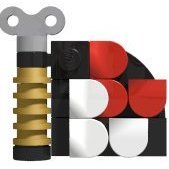
[MOC] Concorde (Air France/British Airways)
DoubleBU posted a topic in LEGO Technic, Mindstorms, Model Team and Scale Modeling
I was looking for LEGO Concorde designs but not very much came up in such a small scale so I thought I might as well give it a try. It comes complete with bendable nose cone, retractable landing gears (front and back), moveable back wing flaps (thanks again, mini fig pants...!) and the optional flame FX for... historical accuracy... . . .!? And as always you can find more pics here and if interested in a cutesy little Concorde to swoosh around the full set & instructions are available here. I hope you like my small sized interpretation of one of aviation history's most iconic aircraft. Thanks & have fun! (And many thanks to ukbajadave for explaining to a noob how to implement more pics here!) -
I created a little plane for the Johnny Thunder CMF. It's actually a revamp of set 5911. I hope you like it!
- 3 replies
-
- johnny thunder
- adventurers
-
(and 2 more)
Tagged with:
-

[MOC] F14A Tomcat
Jeroen Ottens posted a topic in LEGO Technic, Mindstorms, Model Team and Scale Modeling
Hi, It has been a while since I posted a MOC, but I have not been sitting idle. Here is my latest creation, a LEGO Technic replica of the infamous F14A Tomcat: It is as densily packed as I possibly could with features. It has seven electrified functions (driven by one M-motor), six pneumatic functions and four manual functions. Driven by one M-motor and using a manual gearbox the following functions are electrified: - The engine turbines (directly coupled to the M-motor) - The rotating Gatling gun on the port side - A small pneumatic pump - The canopy - The landing gear - The eight landing gear bay doors - The main adjustable wings (in the picture above they are in the low speed, extended position) Next to that there are six pneumatic valves controlling the following functions: - Switch between the internal small vacuum pump and the external large vacuum pump - The bleed doors in the air-intakes of the engines - The delta wings at the side of the air-intakes - The arresting hook - The front and rear flaps on the main wings - The two air brakes on the main wings and the three air brakes at the end of the fuselage The plane also features a couple of manual functions: - A knob to control the pitch of the aircraft. The rear horizontal wings and the joystick are controlled with this knob. - A knob to control the roll & jaw of the aircraft. The rear horizontal wing, the vertical control surfaces and the joystick are controlled with this knob. If the landing gear is down, the front landing gear is steered with this knob as well. A special differential control mechanism is used to combine both pitch and roll control and feed only one signal to each wing. - The nacelles that contain the turbo engines can be opened and the engines can be taken out. - A double lever to activate the ejection seats. The canopy is ejected at the same time as well. This model is available as a limited edition exclusive set on my website. Finally some fun facts: The model weighs around 4 kilograms and is just shy of 4000 parts It is 87 cm long, 101 / 66 cm wide (main wings open / swept back) and 33.5 cm high when put on its stand It has ten small pneumatic cylinders and nine shock absorbers It has 549 axles, 110 gears and 111 panels Most of the functions are color coded so that you can distinguish them during the building process Comments and questions are welcome as always. Leg godt, Jeroen Ottens -

[C-MODEL] 42074 - Propeller Plane
Tomik posted a topic in LEGO Technic, Mindstorms, Model Team and Scale Modeling
Two years ago I built freight helicopter out of set 42074 and few weeks ago I built another alternative model from this set - propeller plane. When you are moving it around it whirls its propeller. I enjoyed building it very much - it took me just three nights to build it and I like its bright color scheme. Building instructions are available at buildinst. Any comments are welcomed.- 2 replies
-
- 42074
- alternative model
-
(and 1 more)
Tagged with:
-
I’m in the plane stage of a lego project I have the blueprint to make a RC scale model of German Horton 229 from WWII. I thought it be cool to make it out Lego bricks (after seeing someone a very large replica of Air Force One ). The only problem I’m having is how the engine are designed into the plane. I want to be authentic on my design. I’m hoping not to ruffle any feather by asking for help with project. I just think it’s a pretty cool plane. I attached some pics of the real Horton 229 as it sit in the Smithsonian to be restored for the museum.. again I hope it ok to post these considering it still has all the original marking on the plane. I got those off the google to show the design of the engines. again I apologize if I offended anyone
-
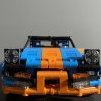
[MOD]Douglas SBD Dauntless
falconluan posted a topic in LEGO Technic, Mindstorms, Model Team and Scale Modeling
After watching the 2019 "Midway" movie, I tried to build a technic version of SBD Dauntless. I wanted this project to be a light and quick one, so I decided not to build the plane from scratch, instead, I wanted to mod from some exist MOCs. Then I found this master piece plane MOC on RB: https://www.eurobricks.com/forum/index.php?/forums/topic/150206-aircraft-fighter-bomber-mkii-lego-technic/&tab=comments#comment-2791893 https://rebrickable.com/mocs/MOC-9602/NikolayZubov/aircraft-fighter-bomber-mkii-lego-technic/#comments It's @Nikolay's wonderful fighter bomber MK II, a beautiful fictional plane packed with tons of features. This MOC has more than enough features I want to add to my SBD, so I removed some of them and adjusted the shape of the plane to make it look like a SBD of course, and here is the result: Featurewise it has(left over from original): Control surfaces controlled from cockpit: Ailerons Flaps (Unfortunately, it doesn't have any of the SBD's famous giant speed brakes) Elevators Rudder, connected directly to the tail wheel Other functions: Retractable landing gear; Wing folding mechanism, I know real SBD can't fold its wings, I keep this function to save space.... Rear machine gun Central retractable bomb pylon Sliding openable cockpit Some details: The olive green parts introduced by 42110 fits very well as the interior color here. The white belly: A closer look at the bomb: For paintjob , I chose the SBD-5's typical paintjob instead of the SBD-3 which appears in the movie. Some comparison with real SBDs: In memory of the already dissembled prototype: More pictures Thanks for watching, hope you like it. Many thanks again to the original MOC author: @Nikolay



